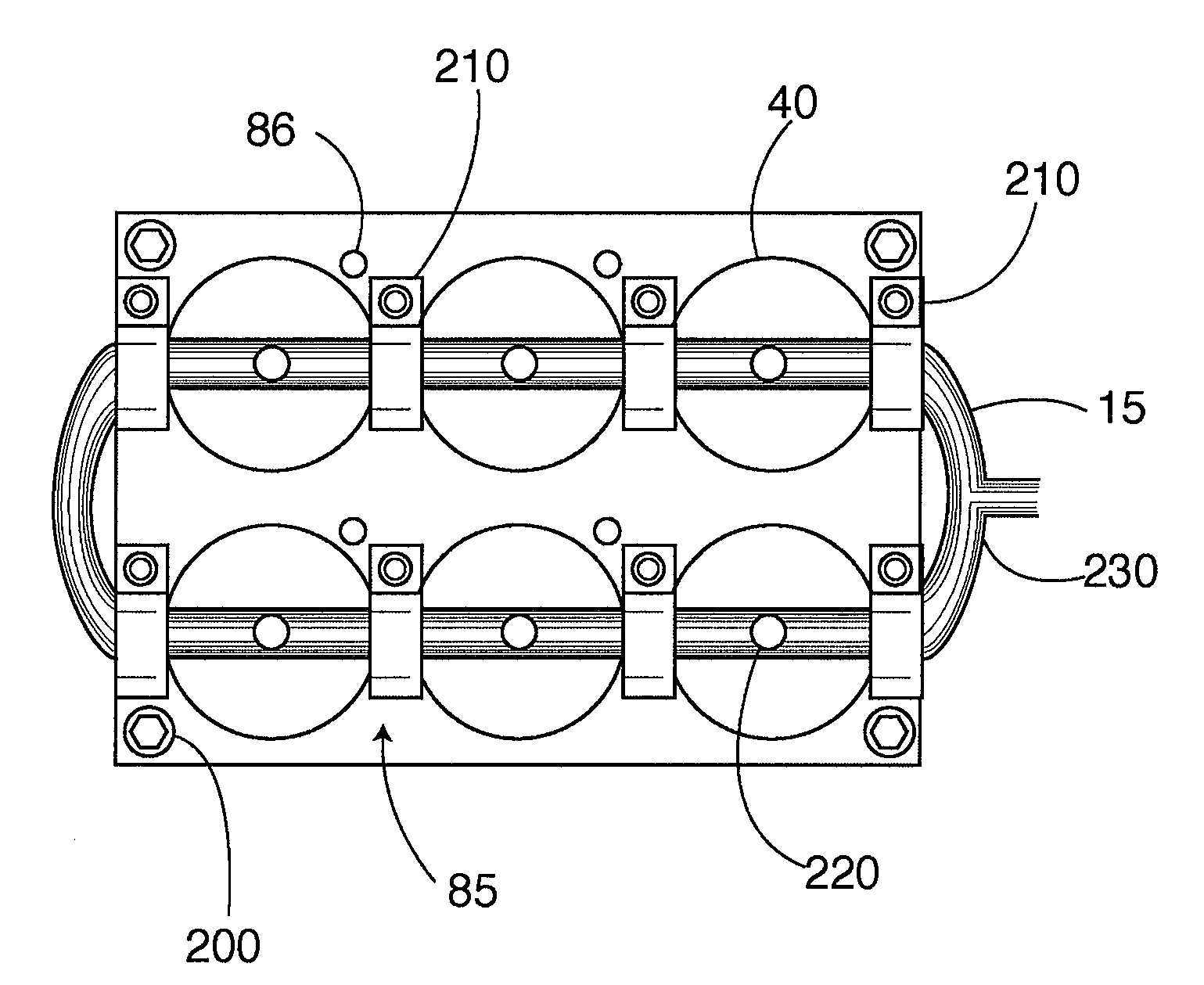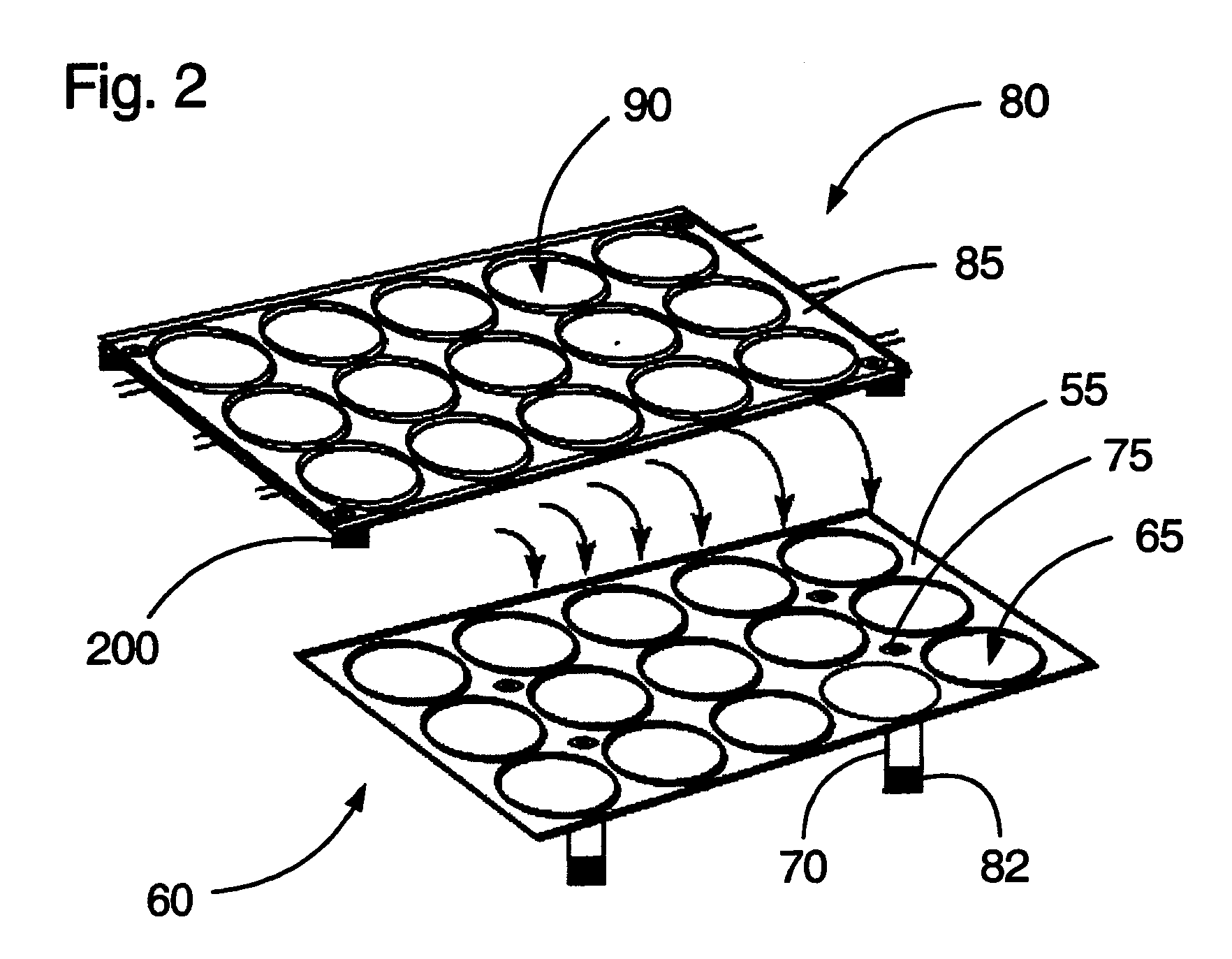Method and apparatus for culturing marine larvae
- Summary
- Abstract
- Description
- Claims
- Application Information
AI Technical Summary
Benefits of technology
Problems solved by technology
Method used
Image
Examples
Embodiment Construction
[0020]The apparatus according to the invention, includes agitator 1, which uses the supply of seawater typically found at a location such as a marine field station, and stirs delicate organisms by gently and constantly directing a stream of water into a culture of organisms. Agitator 1 is particularly useful for culturing lecithotrophic echinoderm larvae with long developmental times at low ambient temperatures through metamorphosis. Such larvae represent relatively large, buoyant, fragile organisms that are prone to fouling in a standing culture, because the death and subsequent disintegration of a few individuals may result in bacterial overgrowth and anoxic conditions. The apparatus according to the invention provides a space efficient solution in which decaying debris is prevented from accumulating, while healthy individuals are easily collectable, and are able to make contact with the culturing container's walls so that settlement and metamorphosis can occur. While this documen...
PUM
 Login to View More
Login to View More Abstract
Description
Claims
Application Information
 Login to View More
Login to View More - R&D
- Intellectual Property
- Life Sciences
- Materials
- Tech Scout
- Unparalleled Data Quality
- Higher Quality Content
- 60% Fewer Hallucinations
Browse by: Latest US Patents, China's latest patents, Technical Efficacy Thesaurus, Application Domain, Technology Topic, Popular Technical Reports.
© 2025 PatSnap. All rights reserved.Legal|Privacy policy|Modern Slavery Act Transparency Statement|Sitemap|About US| Contact US: help@patsnap.com



